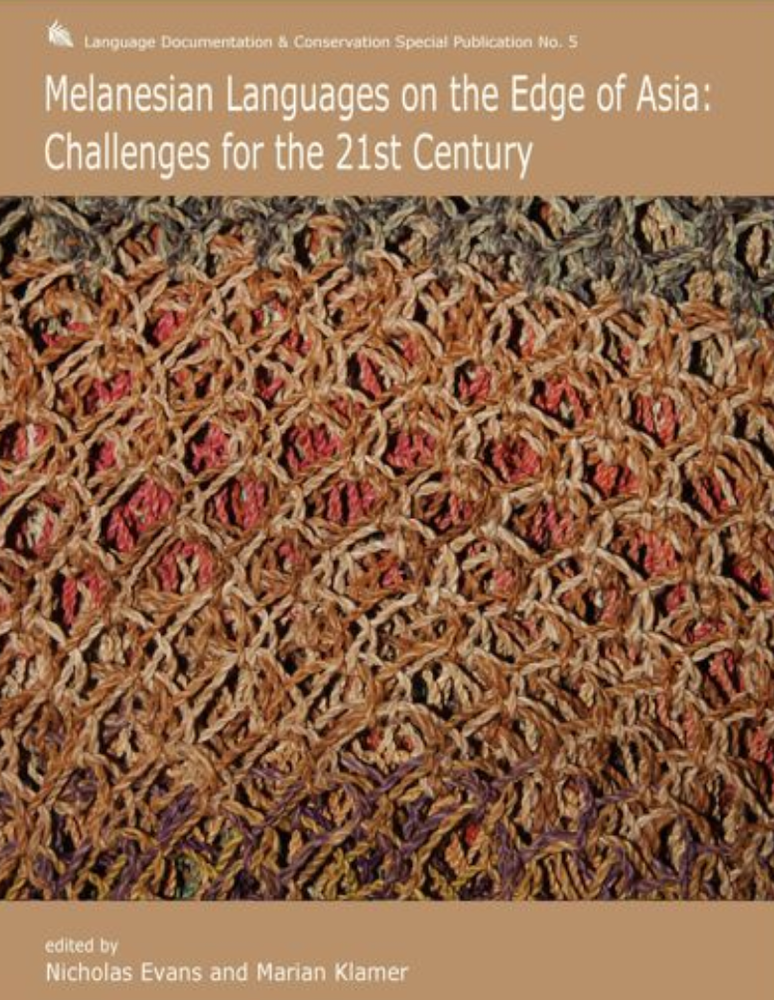1. Introduction: linguistic challenges of the Papuan region
Nicholas Evans, Marian Klamer, pp. 1-12
2. The languages of Melanesia: Quantifying the level of coverage
Harald Hammarström, Sebastian Nordhoff, pp. 13-33
3. Systematic typological comparison as a tool for investigating language history
Ger Reesink, Michael Dunn, pp. 34-71
4. Papuan-Austronesian language contact: Alorese from an areal perspective
Marian Klamer, pp. 72-108
5. Even more diverse than we had thought: The multiplicity of Trans-Fly languages
Nicholas Evans, pp. 109-149
6. Projecting morphology and agreement in Marori, an isolate of Southern New Guinea
Wayan Arka, pp. 150-173
7. ‘Realis’ and ‘irrealis’ in Wogeo: A valid category?
Mats Exter, pp. 174-190
8. From mountain talk to hidden talk: Continuity and change in Awiakay registers
Darja Hoenigman, pp. 191-218
9. Cross-cultural differences in representations and routines for exact number
Michael Frank, pp. 219-238
10. Keeping records of language diversity in Melanesia: The Pacific and Regional Archive for Digital Sources in Endangered Cultures (PARADISEC)
Nick Thieberger, Linda Barwick, pp. 239-253

